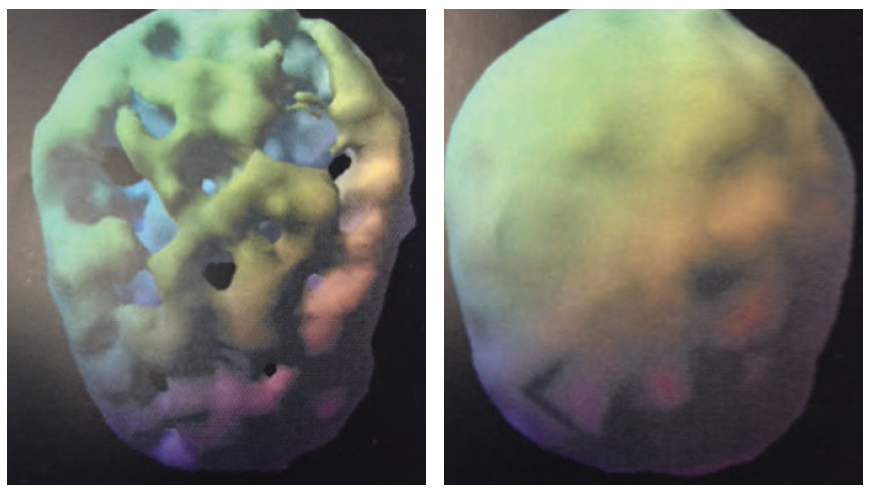by Dr. Stanford A. Owen
The brain is really ugly. I mean UGGG—-LY. It is slimy, wrinkled, and drab. So what makes a brain “beautiful”?
Dr. Daniel Amen, “the” pioneer in attention deficit disorder, studied brains with nuclear imaging then correlated those images to behaviors he evaluated in patients with all sorts of brain disorders. His “beautiful” brain looks smooth and homogeneous compared to a pocked and cratered “moonscape” abused brain (below). He found that the beautiful brain rarely suffered from attention or memory disorders and is usually mentally stable. He also noticed that patients with poor nutrition, poor sleep and exercise habits, smokers, and drug abusers consistently had “ugly” pocked and cratered brain scans. Using these scans, combined with intensive interviews and testing, he was able to transform many of these “ugly” brains into healthy and beautiful brains. He observed marked improvement in memory, attention, tasking, and emotions.

Combining brain scans with symptoms and mood scores, Dr. Amen found seven major patterns of attention deficit disorders, each requiring different behavioral and medical treatments. However, he found that all brains improve in brain scan appearance and symptom scores with specific lifestyle and supplement use. Below is a very abbreviated summary of his recommendations:
- Consistent exercise, even mild exercise such as walking improves brain function.
- Meditation or prayer helps “calm” brains that appear “on fire” in scans and improves the activity in the frontal cortex so vital to attention and focus.
- Adequate sleep is crucial to brain growth and recovery.
- Low sugar, low carbohydrate, and low animal fat diets improve brain function. Seafood, eggs, vegetables, whole fruit, nuts, and lean meats heal brains. Animal fat (pork, beef, dairy) combined with carbohydrate (wheat, corn, rice, potatoes) stimulate toxic cytokines made by the fat cells, liver, and intestine that damage brains. Examples of these combinations are cereal and milk, bread and butter, sandwiches, biscuits and sausage, pasta, pizza, fries, cakes, cookies, and snacks. Pure sugar is worse—soda, juice, milk, sweet tea.
- Supplements with protein amino acids (smoothies) quickly and immediately replenish diseased brains by providing energy and repair.
- Adequate vitamins and minerals help stressed, anxious brains. Magnesium, vitamin D3, methyl-folate, and fish oil calm and improve mood while increasing sleep. They increase focus and the ability to handle tasks and organize.
- NAD (nicotinamide adenine dinucliotide) given intravenously helps drug-abused brains, relieve migraines and PTSD while reducing cravings.
- Simple visual-processing disorders (Irlen’s Syndrome) can be corrected by using colored lenses while one is reading and writing.
These are simple, natural, and inexpensive interventions everyone can make to improve brain function and ADD while making your brain “beautiful.”
Stanford A. Owen, M.D. is founder of the ADD Clinics of Mississippi. He is certified in internal medicine, nutrition, and psychopharmacology. He is a fellow in the Obesity Society and author of books and scientific publications about diseases related to nutrition. He can be contacted at ADDclinics.com or drowenmd@drdiet.com. His office is in Gulfport, Miss. (228) 864-9669.


